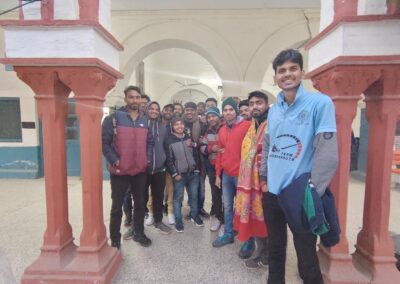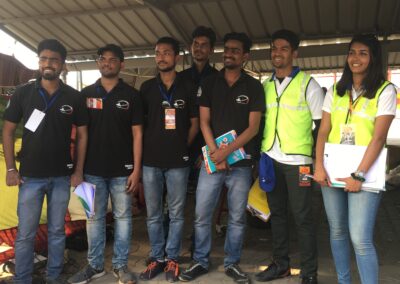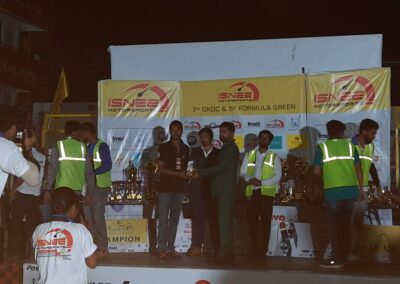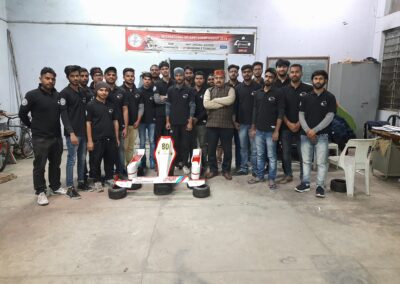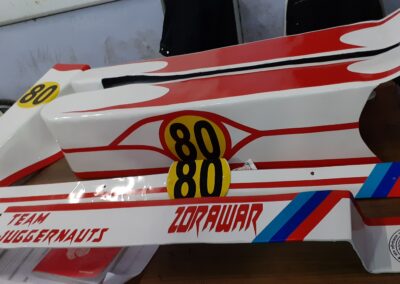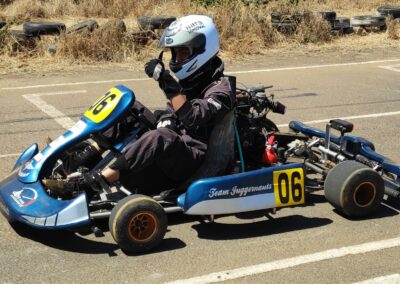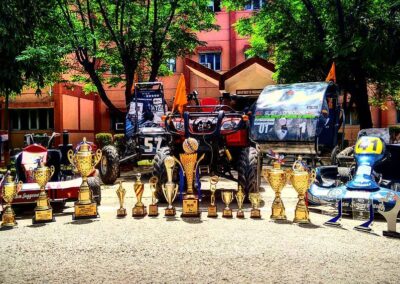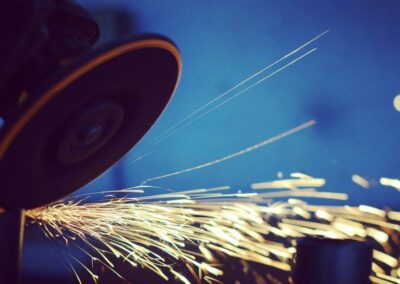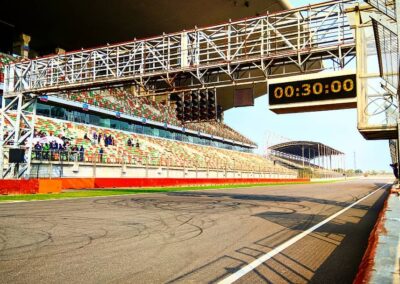
Time period:
Start Date: September, 2019End Date: February, 2020
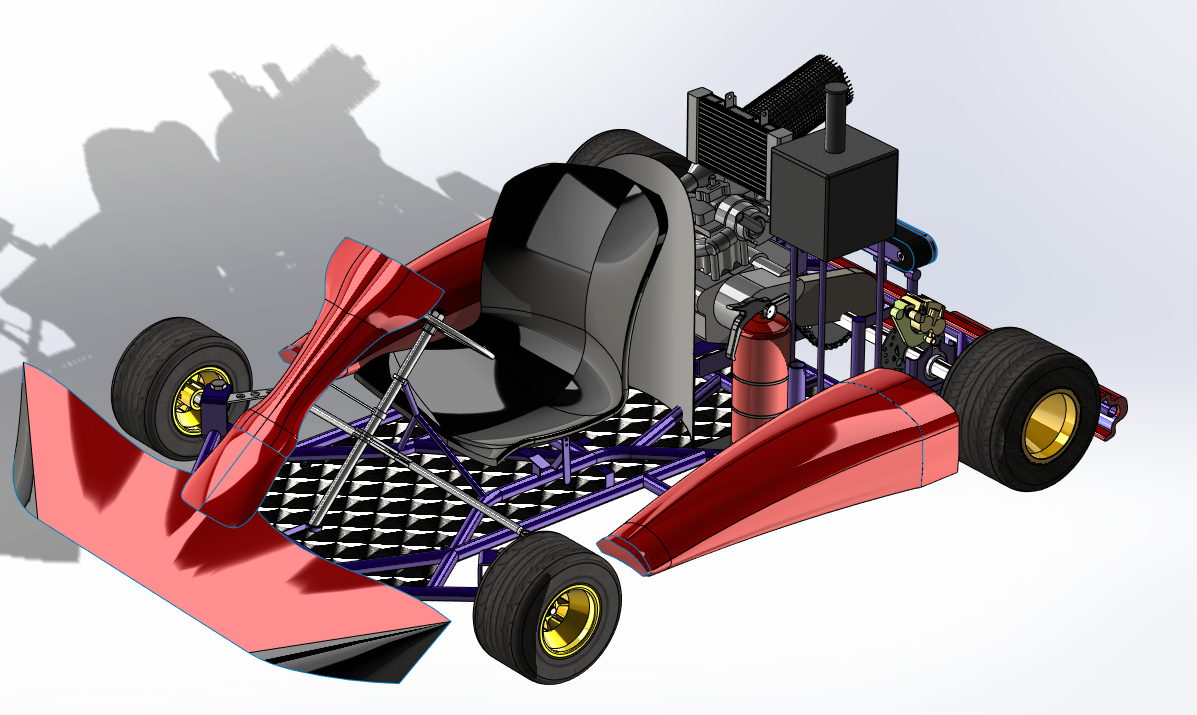
Background
In my first-year of college I joined Team Juggernauts.
Team Juggernauts was a racing team, that built Go-Karts from the ground up and took those to competitions like the GKDC (Go kart Design Competition held in Coimbatore), the IGKC (held in punjab) and some other competitions. I worked in the Design-Department of the team. There were a total of 24 teammates with me, all assigned to different responsibilities. Our captain was a 4th year, “Ashish Sir”, and the different departments, i.e. Design, Brake, Transmission, and Steering were all led by Third/Fourth Year Students.
The Design Department was led by Abhishek Raushan Sir, a third year student. In this department I would learn a lot. The Kart was designed on SOLIDWORKS, and we used Ansys to analyse the forces and air-drag. I looked at the entire process and as I was not allowed to give any input to the process without supervision, I mostly just tried to replicate what was being done by the department leader.
The Problem Statement
We had to build a Go-Kart from the ground up. We were given a workshop to work in, where we would go every night from 9pm to sometimes even 2am-3am. The workshop had most of the equipment required for us to build the Kart. After the Kart was built, we would transport it to whatever competition we had to participate in. We would go there as participants and race.
Every competition would have different formats, but they all followed a similar outline. There would be an interview of all the engineers working on the vehicle and working professionals would come to test their knowledge. They would be asked questions about the kart they built, why they made specific decisions, or just automobile engineering in general. After the interview the car would be measured and the features would be tested. If the car did not meet the requirements, or had some safety issue, the team would be disqualified. After that there would be a practice lap which was immediately followed by the main event – the race.
Out of 120 participating teams, 40-50 would generally make it to the race.
Important Hurdles
There were many ways this could go wrong. The organizers would give us a huge instruction manual with important minimum and maximum measurements the kart builders had to obey. Every kart also had to have some extra features, like an external red stop push-button, a specific maximum brake-distance (distance the car takes to slow down to a stop from max speed), among other rules. While designing the car we had to keep this rule-book in mind at all times.
The competition also tested for any innovations in the build of the car, and they had records of what you had previously taken to the competition. So if you showed with the exact same car, or a replica of it, then you would lose points. There usually also was an “Innovation” category which gave a cash prize to whoever got a car with the best new feature or idea embedded in it. Teams were always trying to bag this alongside the main-event prizes.


My Contributions
As a first year, I was not allowed to have much of an affect on the final build of the Go-Kart. We were just there to sit, watch and learn. I did (out of boredom mostly) take on the task of trying to repeat everything that the lead designer did.
So while Abhishek sir was making the entire design of the Kart, and the Kart was being built with the help of that design, then I was trying to replicate a design on my computer looking at the Kart that was built.
I did succeed to some extent, after which I sat with my project lead and looked at everything he had done and compared it to everything I had done. The upside was that I picked up SOLIDWORKS, a CAD design software, quite well.
Additionally, as the date of the competition grew closer, the seniors got busier and busier, and were not able to supervise us juniors as much. This resulted in us juniors having a lot of free time on our hands, with really nothing to do except study and watch. I had picked up some web-development and I saw all this free time as a great opportunity for some safe web development practice, so I asked Ashish Sir if I could build the website for Team Juggernauts.
Fast forward 1 month and I was enroute to coimbatore for the competition, having built a website (teamjuggernauts.com), and having learnt a whole lot of SOLIDWORKS. The website is not live currently, but I will link the GitHub to the code I wrote down in the resources section, along with some of my design files and reports that we made for the GKDC competition.
We ranked 2nd in the design category, 4th overall in the main event, and as a nice bonus, our captain won the award for having the most disciplined team on site.

Resources
Links
This links to the GitHub folder where I developed the teamjuggernauts.com website.
The code is very messy and should not be copied or treated as an educational repository. This is uploaded solely because its the only remaining evidence that I actually made a website.
This is a link to the Google Drive folder where I have uploaded some of the SOLIDWORKS designs.
GO KART 3- has the final designs made by Abhishek sir
GKPracticeDesign – Is the folder where I have kept my attempts at replicating that design
PPTs and Reports – As advertised
This is a link to the YouTube channel of Team Juggernauts.

